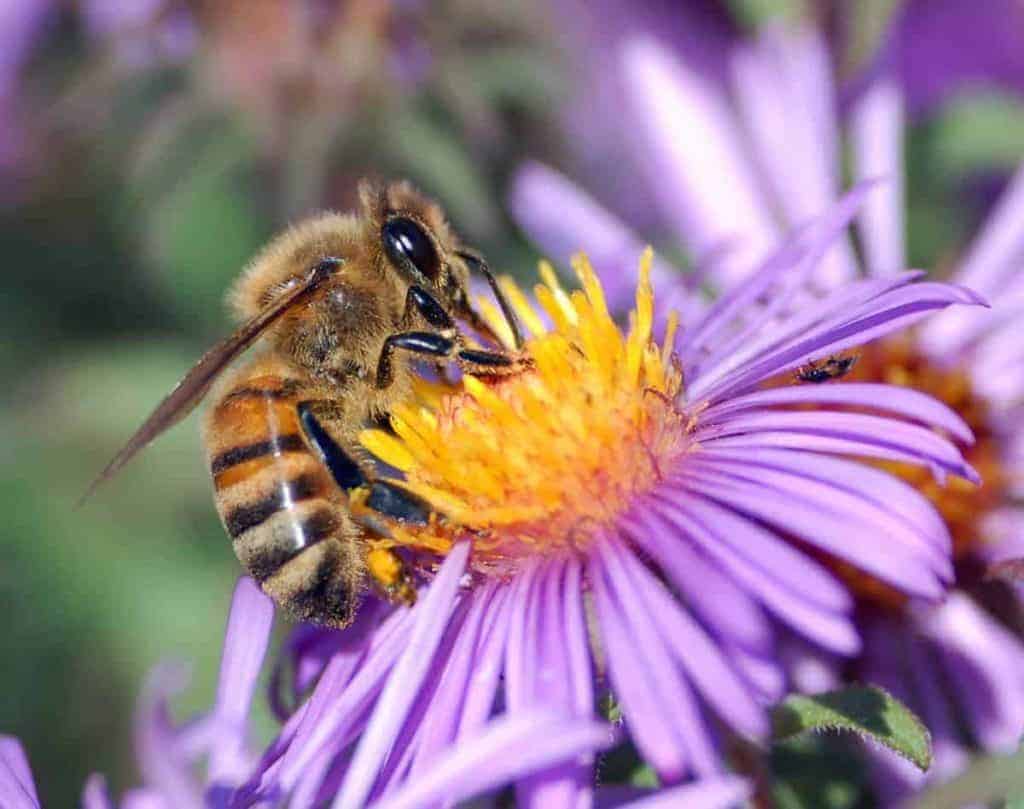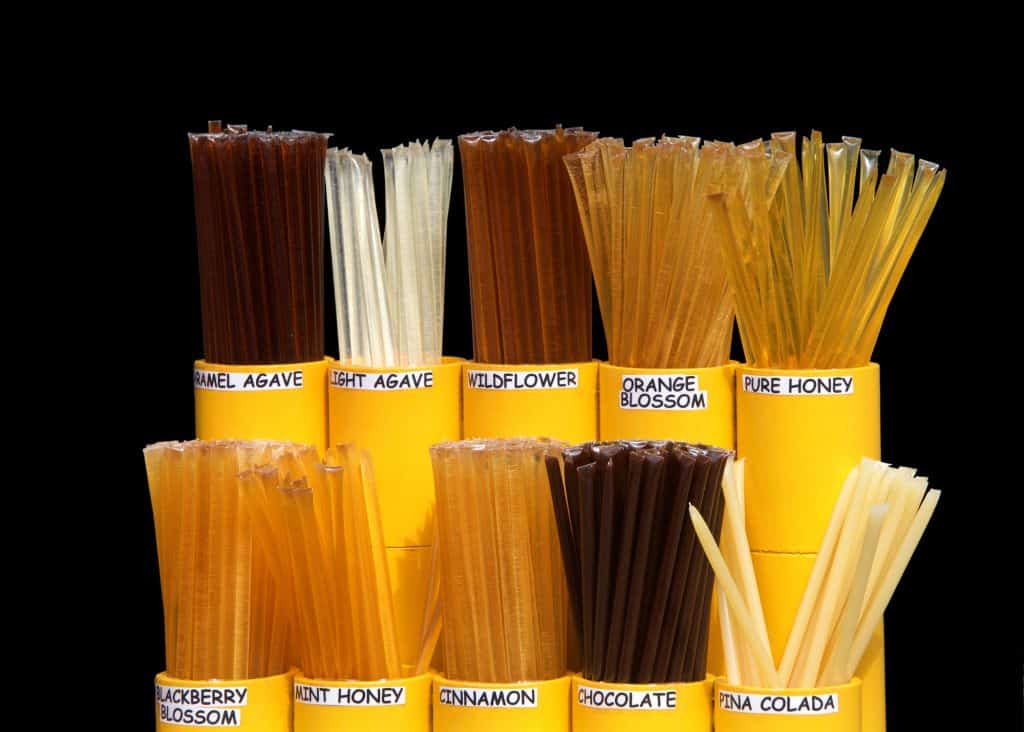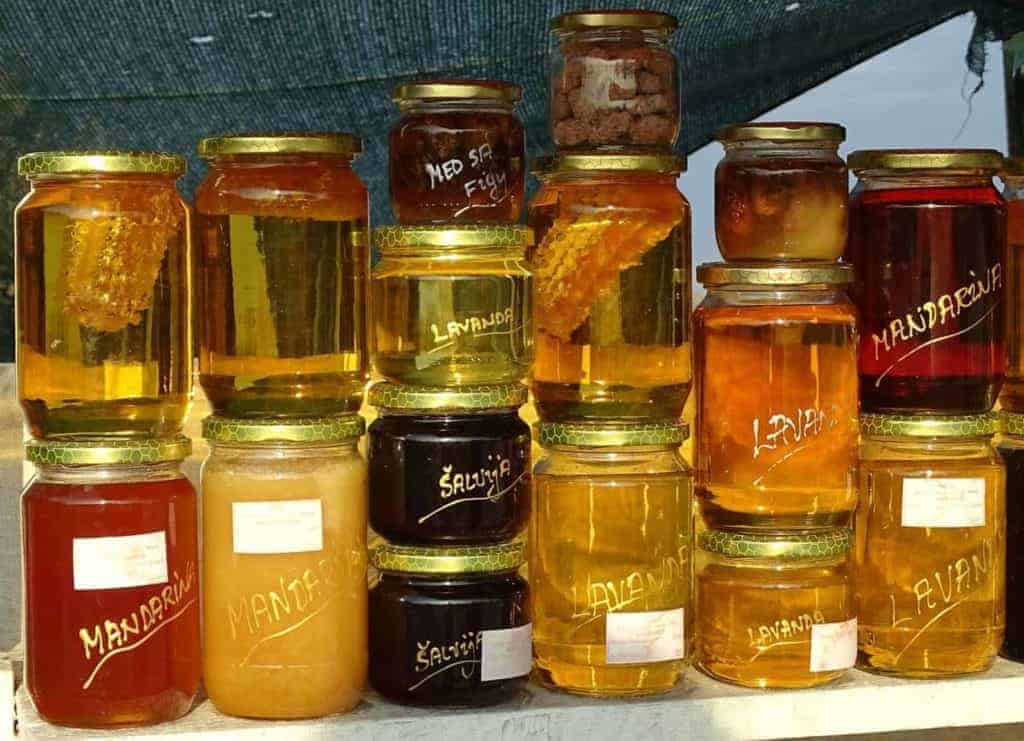Most people know honey as a sugary and very tasty substance, made from nectar gathered from flowers by honey bees. What many people don’t know is that honey is much more complex than just water, sugar and nectar. In fact, the nectar gathered undergoes a complex transformation, from the moment it is collected by a worker bee and continuing once that nectar is brought back to the hive.
Only after nectar has been transformed by the bees at a molecular level and properly aged by the bees themselves, is that honey fit for consumption.
It’s a long road and process to make honey. But what exactly is honey?

A Rich and Wonderful Substance
Bees make and store honey because that’s what they eat! A colony of honeybees has to store a large amount of honey reserves, This will sustain them through the winter when there are no blooming plants and the bees can’t head out to fly and gather more nectar. Not only does honey serve as an energy source for the bees, but it has a complex, nutritional nature that is also healthy for the colony.
First and foremost in the minds of beekeepers who harvest honey, is leaving the bees enough honey so that colonies can make it through the winter. People have collected honey from wild bees for thousands of years, with honey collection from wild hives depicted in cave paintings dating back as far as 8000 years ago. The Egyptians practiced beekeeping using clay pots and used honey to sweeten foods in their diet. Today, beekeepers utilize specialized honey extraction equipment to obtain honey, and we store our honey in everything from jars and bottles to honey sticks.
Humans have found honey irresistible throughout the ages, and the taste alone is sufficient to have kept it as an important edible pursuit for countless cultures. But it’s not just the taste; honey has many health benefits as well.
Honey is often utilized in a medicinal context. Don’t throw out the rest of your medicine cabinet quite yet, but honey is a natural antioxidant and anti-bacterial that has been used for everything from wound dressings, to an ingredient in old-fashioned cough remedies.
The uses don’t stop there however. Honey is also being researched in regards to its possible usefulness in the fight against more serious health concerns as well.

The Key Characteristics of Honey
Not only does honey taste great while being good for you, it also stores well…meaning just about forever!
Due to its low water content and acidic profile, along with a little hydrogen peroxide thrown in for good measure, honey does not go bad. In fact, there have been reports of honey being recovered from tombs thousands of years old and 5,500 year-old honey (still in the comb and stored in pottery) has been found in the country of Georgia. And even though honey can be frozen and thawed, it keeps just fine at room temperature – no refrigeration required.
Just as honey has many different flavors, the color of honey will vary considerably too, depending upon the flowers on which the bees foraged. Generally, there are light and dark honeys. However, if you find yourself in a honey judging contest one day, you’ll need to know the 7 main color grades of honey: water white, extra white, white, extra light amber, light amber, amber, and dark amber.
Some say that honey on the darker end of the spectrum packs a little more punch in the health department. Buckwheat honey, for example, is a very dark honey known both for its strong taste and health benefits. Lighter honeys are known for their sweet, less assertive flavors.

What is in Honey?
We all know honey tastes great, but what exactly is it? There’s quite a story here.
Honey is comprised of at least 181 different compounds. It all starts when a bee visits a flower. The nectar produced by the flower is mostly water, but also contains sucrose, a complex sugar made from the linked simple sugars glucose and fructose. This sucrose is very similar to granulated sugar made from sugar cane or sugar beets.
Yet, honey is easier to digest than sucrose. This is because when a bee gathers the nectar from a flower, storing it in its honey stomach to take back to the hive, enzymes are added. These start to break down that sucrose back into glucose and fructose. Each time nectar is handed off to another bee, more enzymes are added, accelerating this action still further. This enzyme, called invertase, is produced by the salivary glands of the bee and is what makes it all happen.
However, the water content of nectar – somewhere in the range of 80% – is much too high for this substance to be stable and to be called honey. Bees will still need to evaporate this extra water content to make honey, which occurs when the water content drops below around 18.5%. The nectar gathered is unique all on its own (making all honeys unique), but as these reactions occur and aging takes place other compounds – from citric acid to hydrogen peroxide – are generated that change the PH of the substance, giving honey a tart flavor, and creating a product that will not spoil. Once the process is complete, we have glucose, fructose, water, and a whole host of other compounds that make honey unique.

If you’ve tasted enough unprocessed honey, you know that no two batches of honey are quite the same. And with the complex nature of honey it’s easy to see (or taste) why. This is what is so intriguing about honey. As opposed to something like granulated sugar in a bag – that always tastes the same – with honey you know what to expect, but with enough jar-to-jar variety to keep things interesting. With the sheer number of compounds in honey, it’s as intriguing to the mind as it is to the palate.
